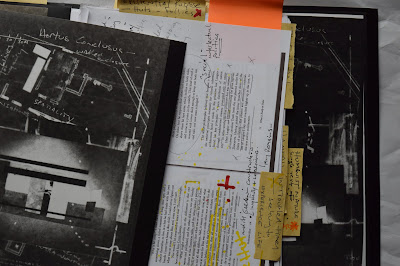Outpost Studio 130423
The Changing Culture of Display.
How things work in museums.
Body/Mind/Movement/Material/Craft
Dynamics of Display inside The White Cube.
Liminality of glass display cabinets, spatialities of object narratives, forms and materials.
Artist as 'interventionist' in specific settings, such as collections and places of distinctive architecture.
The more 'aesthetic' the installations, the fewer the objects and the emptier the surrounding walls, the more sacralized the museum space.
A new generation of complex narratives and juxtapositions in museum displays has evolved as a challenge to the minimal installation.
Civilizing Rituals.
Inside Public Art Museums.
Carol Duncan. 1995.
The formal qualities of the 'objects' and their haptic qualities directly speak to the visitor.
Julian Stair.
Giving 'Pots' universal aims and characteristics/utilities.
Ceramics.
Philip Rawson.
In this land we placed baptismal fonts
And an infinite number were baptized
Americo.
Patti Smith.
Refraction phenomena produce a particular magic in architecture that is adjacent to or incorporates water.
Parallax.
Steven Holl.
Site specific artworks/research responding to themes initiated by Water.
To explore 'water' as both a spiritual and corporeal source and vessel for artworks.
Gathering research and responding to the historical site of St Peter Hungate.
To further develop exploratory working ideas through site specific research using drawing, cyanotype printing, leaded glass, clay.
Hungate, Norwich. 2023
A child 'concretizes' its existential space.
Existence-Space and Architecture.
Christian Norberg-Schulz.
Architectural Body.
Organism/Person/Environment
Gins and Arakawa.
'Lever' 1989-92
Antony Gormley.
Indios Verdes No 4 1980
Manuel Neri.
Figure 2. Upright human body, space and time. Space projected from the body is biased toward the front and right. The future is ahead and 'up.' The past is behind and 'below.'
These objects are moving through time and space.
The temporal enactment/kinaesthetic relationship with how things operate/work through the body
Key Words: Profane, Sacred, Past, Left, Right, Front, Back, Horizon, Future. Upright Human Body, Space, Time,
Experiential Values.
Responding to Quietus and the liminality that is created.
The passage from life to death and the stillness and presence of the objects as generative of a particular kind of haptic and visual experience.
Making art that is the pivot for human behaviour.
Pots operate on so many levels.
When we appreciate/apprehend objects, touch them, hold them in our hand, somehow its a material reinforcement of our physical selves as we negotiate our way through life, both physically and intellectually.
Pots can become invisible, so familiar that they disappear.
My interest in pots is in making an art that one engages with, an idea of art operating in a social context, in which the experience of the everyday is important. I have come to realise is that I want to make art that shapes human actions, and is also like an active narrative through the body.
The Presence of Unglazed Clay.
Seeing Raw Material.
Working Vessels.
Quietus, 12 years in the making.
A 'Well Conceived Idea' an exhibition about pots and death.
In the mechanics of appreciation there is both the optic and the haptic.
I wanted to see if I could keep hold of that idea of a single stand-alone object that existed on its own, in its own space, form and surface colour, but on a larger architectural scale. So it was not just about holding a body, but about holding architectural space including outside areas.
I didn't even have an idea of what I was going to make. The making process is absolutely central to the evolution of the idea. If you sit down to work, in six months you can be in a totally different place, so that decisions are made in an incremental way.
Critical thinking/theory is really empowering to me, equipping myself with knowledge has enabled me to chart my way through the present.
Archaeology of an Exhibition.
Quietus-Reviewed. 2013
Julian Stair.


.jpg)
.jpg)
.jpg)

.jpg)

.jpg)






No comments:
Post a Comment